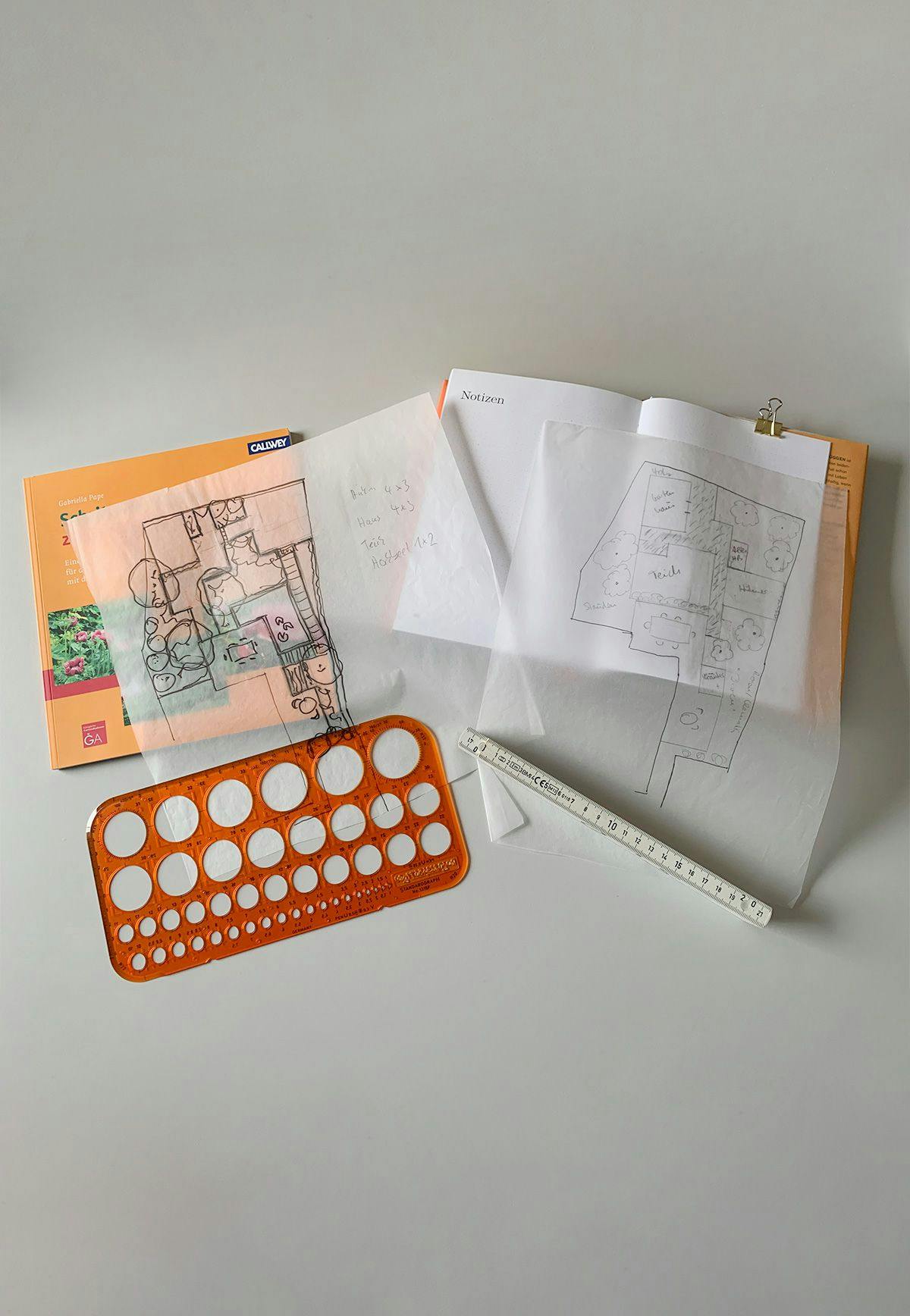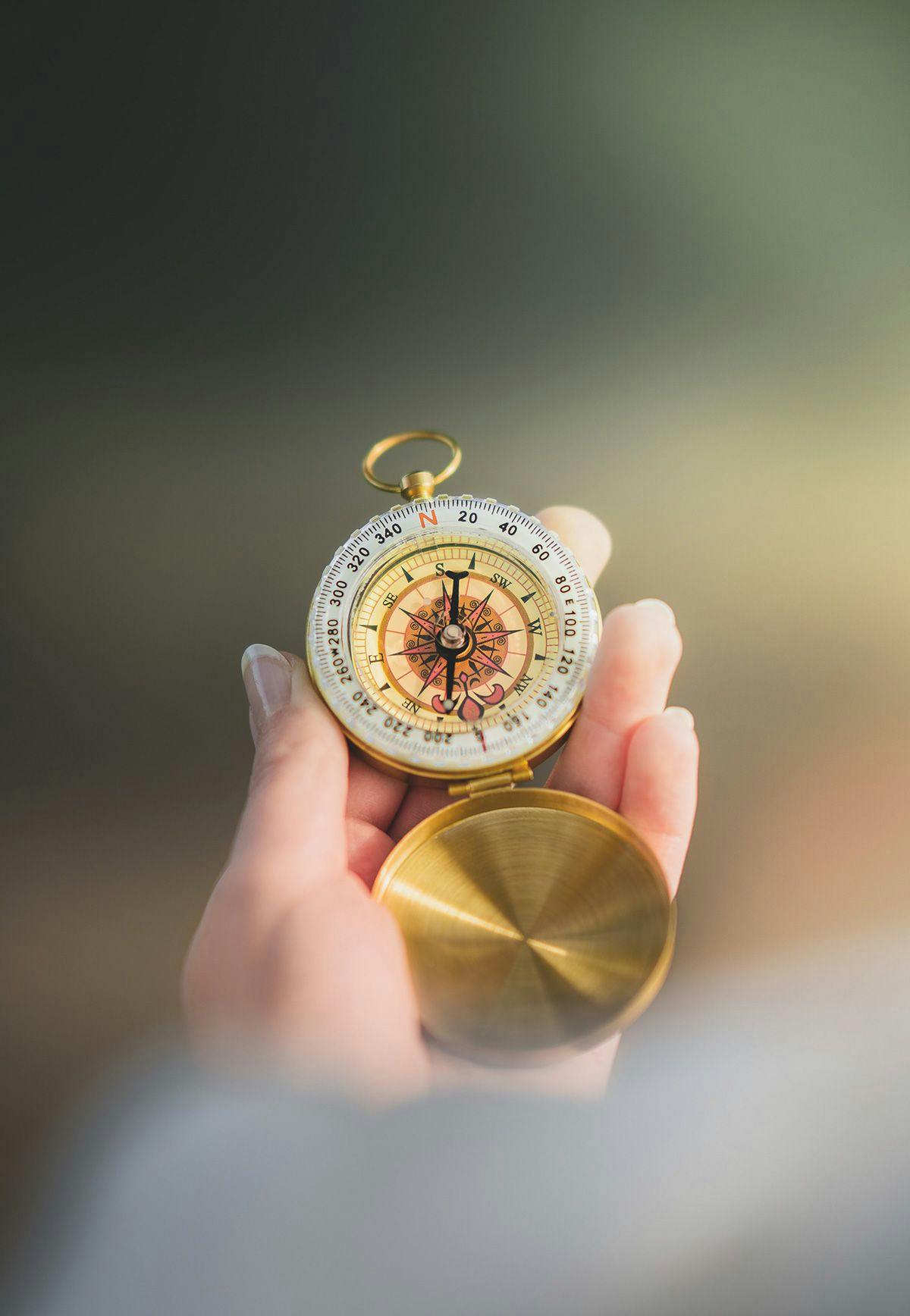YOUR GARDEN IN JANUARY
Planning your new garden
👨🌾 ⛱
by Sabine van Osenbrüggen
**When it has become quiet in the garden in winter, it is the best time to start planning for the new year with a strengthening cup of coffee or tea. If you have just moved into your new house, there is a partly existing or new garden for you to plan. In either case, it makes sense to give it some thought before you get started. "Why?" you might ask, "you can garden on the fly." Yes, you can, but then it might cost twice as much.
Let's start with a new garden. The house was built, now there is only brown landscape outside and where do you start now?
Take measure
First, you measure the plot, really with a tape measure. And you look at your compass (on your phone, for example) and see which compass direction your garden is located. "But why do this work, I have the plans from the developer or architect." That's true, but you'll get a much better feel for the dimensions of your garden if you walk it once to every corner, turning around every once in a while to look at the neighborhood and surroundings, than if you just sit over a two-dimensional plan. Also, I have seen very often that the breezeway (the little arrow in a corner) on the plans is not always correct. So now you have your garden mapped out and note the dimensions of the garden area, patio, garage or carport.
Our three-year Perma Calendar offers enough space for all your ideas, observations and measurements. Naturally sustainable and produced with a robust linen cover:
Alignment
The compass direction is important so you can determine where you want to put seating, a vegetable patch, or the play area. Maybe you want an evening terrace to enjoy a coffee or wine in the setting sun after work. Or a seating area to the east for breakfast in the sun. What does the surrounding area look like? Do you get shade from trees in the neighborhood. Caution. You may now have bushes cut all the way down in the winter and sprouting back up in the spring, hanging over the property line. It is also important whether your garden is in full sun, i.e. has a southern exposure. Or is it semi-shaded to the east or west. Or is the front yard perhaps in full north and shade. All this will have an effect on the choice of plants later on.
**Function of your garden
Now ask yourself, what do you want the garden to be for you? Recreation and beautiful celebrations? Playground for the kids? Self-sufficient garden with lots of fruits and vegetables? A low-maintenance garden? Or a mixture of all?
Then you divide up your garden. If you have kids, you'll need a sturdy lawn, room for play equipment and sandbox. For family gatherings, a large patio so everyone has room. If you want a low-maintenance garden, then plan generously for plants that will cover the ground very quickly and you won't get weeds and have low maintenance. And for the fruit and vegetable fans, plan the fruit trees and beds.
If you are setting up your garden at an advanced age or perhaps you are in a wheelchair, you can also create a suitable garden, e.g. with raised beds and create paths without steep inclines and stairs. So that even in old age you can still enjoy gardening for a long time.
Soil
Let's take a look at the soil. Did the developer bring you a nice topsoil that is dark brown or just nutrient-poor sandy soil? Do you perhaps have a heavy clay soil? You can easily test this by shaping the moist soil into a sausage. If it is firm and similar to pottery, then it is loamy soil. If it remains a loose sausage, you are dealing with rich topsoil. And if the material runs through your fingers, you are dealing with sandy soil. The loamy soil, in my opinion, is the most challenging because you will have water standing in it, many plants don't like that and a lawn also needs a soil that is permeable to air and water. Depending on the soil you find, you can choose appropriate plants or adjust the soil: You can improve the loamy soil by incorporating sand and compost. The sandy soil also gets large portion of compost, depending on what you want to plant, for example, if you want to grow vegetables. There are also prairie plants that like sandy soil very much. For new construction, I can recommend that you use a tiller to loosen the soil vigorously, as it has been compacted by the heavy construction equipment. This is extremely bad for planting trees and woody plants, as they cannot develop their roots. Find out what was on the property before. If it used to be a commercial area, perhaps a professional soil test might be necessary to determine pollutants, if any. This is very important if you want to grow vegetables.
**Electricity
It's also helpful to think about whether you'll need electricity in the garden early on, because you might want to put in a pond and need electricity for the pump. Or you may have planned a second sitting area and want lights there. If you want to do handicrafts in the garden house, you will need electricity there, too. This is easier to install in an empty garden than in a fully planted garden.
**Water
If you want to make your life easier and have a central water sprinkling system, now is the best time to install it, before all the plants are in. Or if you plan to collect rainwater in a cistern, then better to dig it in now than to destroy everything again later.
Very important if you get help: order the gardener or landscaper early in the winter, in the spring he is fully booked. If you want special woody plants or plants in your garden, you should also pre-order them from January.
Write down all your ideas and wishes, dimensions and plants, for example in our Perma Calendar, you will always come back to it. Over the year many ideas will come to you, you will discard others or develop them further. As the saying goes "the garden is never finished" and we'll make sure you never run out of ideas. In February, I'll tackle planning an old garden with you. Until then - have fun planning and gardening.
Your Sabine

